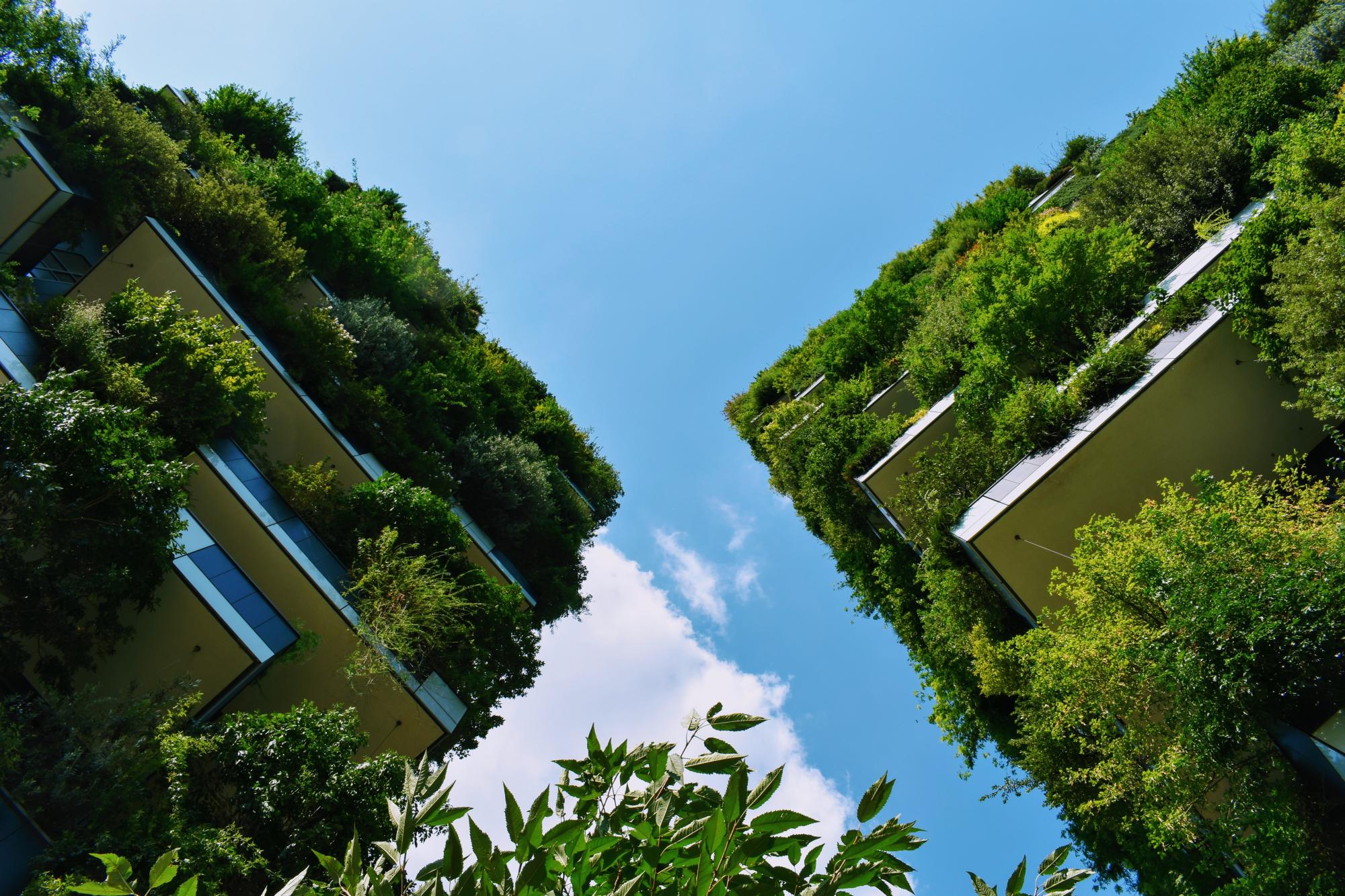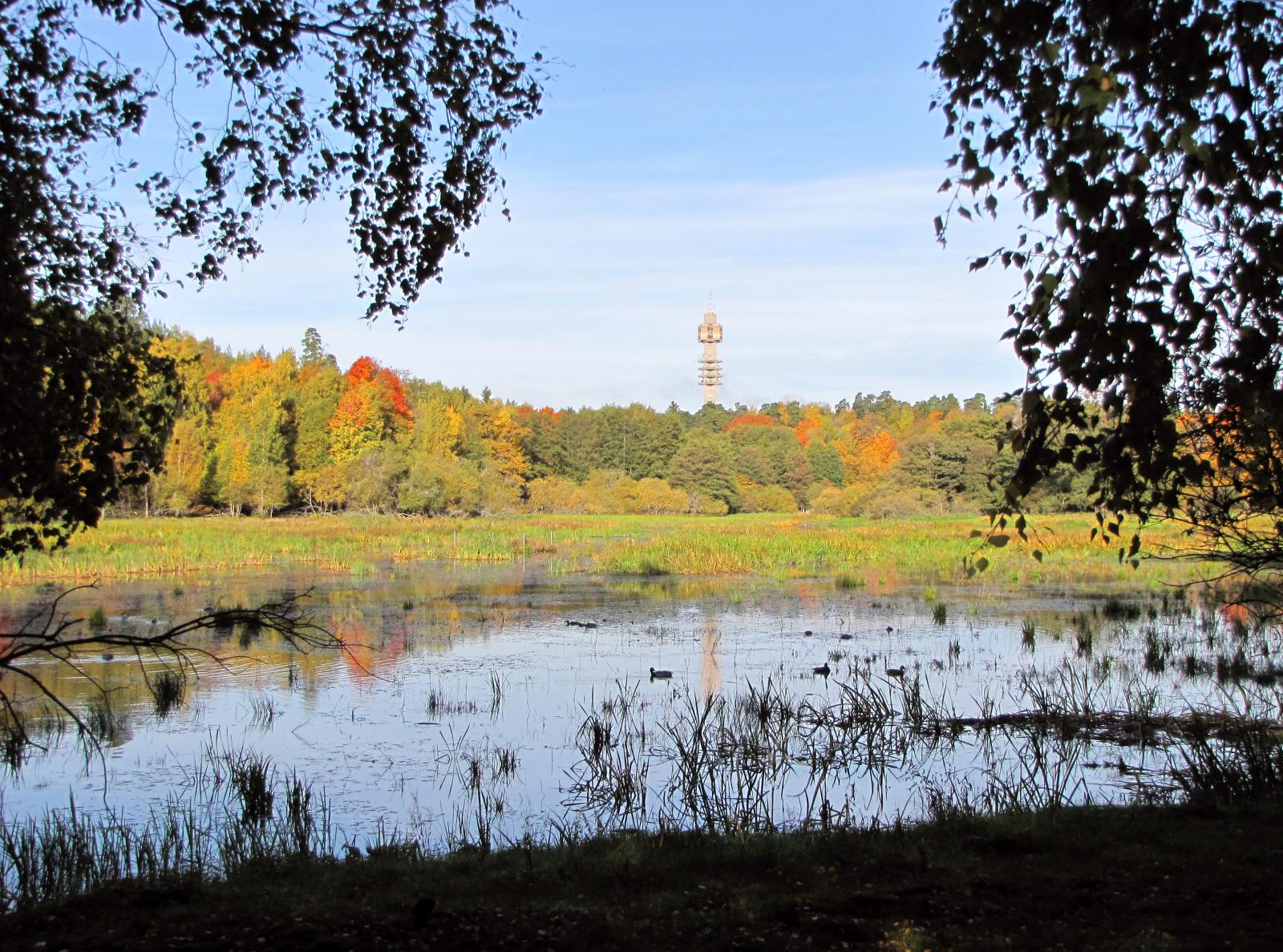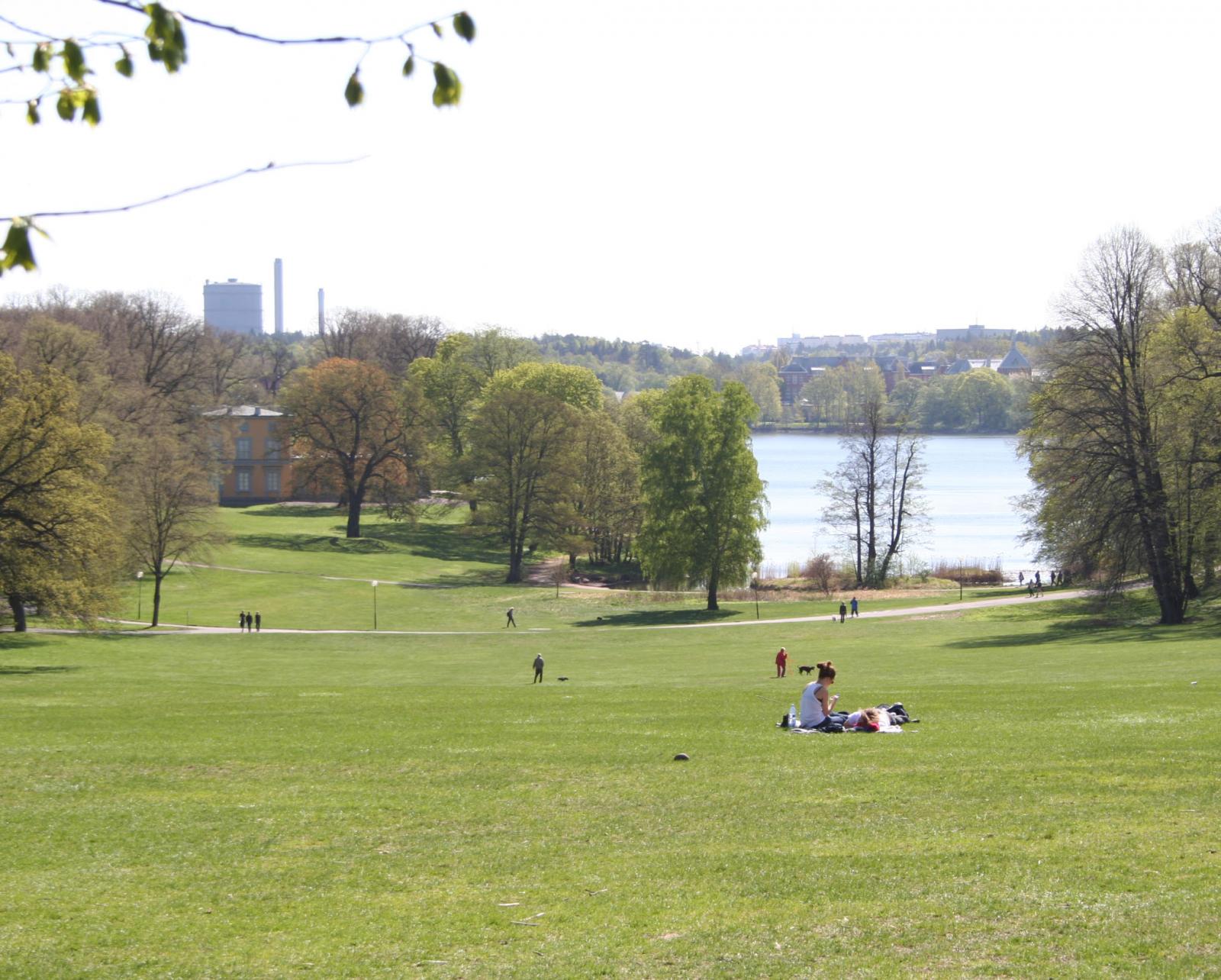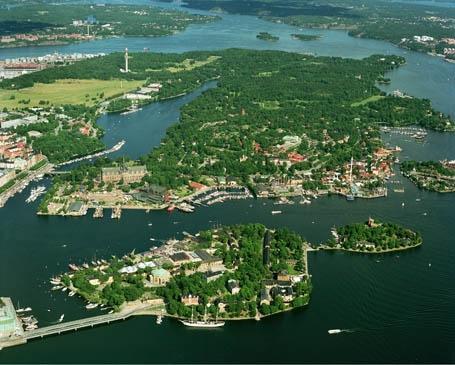Last updated: October 2021
“The Royal National City Park, the world’s first national city park, was created in 1995 by the decision of the Swedish Parliament. The Park was established to safeguard and enhance the unique qualities of this area, containing outstanding natural qualities and heritage sites, ecologically important for the metropolitan area, and situated near and easily accessible from the central parts of Stockholm.” (Ref. 1) One can experience a truly unique historical landscape, intertwined with parks, beautiful buildings, forests, open fields and beaches. In 2020, the park celebrates its 25 the year. (Ref. 12)
Overview
Nature-based solution
- Parks and urban forests
- Large urban parks or forests
Key challenges
- Green space, habitats and biodiversity (SDG 15)
- Green space creation and/or management
- Environmental quality
- Noise reduction
- Health and well-being (SDG 3)
- Creation of opportunities for recreation
- Cultural heritage and cultural diversity
- Preservation of natural heritage
- Protection of historic and cultural landscape/infrastructure
- Preservation of historic traditions
Focus
Creation of new green areas, Protection of natural ecosystems
Project objectives
The park has several goals, such as increasing awareness of the public regarding the park, in order to increase awareness regarding the value of the area. Increasing the use of the park (accessibility) for recreation and exercise. (Ref. 4)
Other objectives for the park include: Information Efforts, Availability, Special Action for Reduced Noise, Management, Special Activities for the Historic Landscape, Special Measures for Biodiversity and Collaboration.
Implementation activities
Graphical marking, information entrances, signs and exhibition screens, website, guidebook, plan for walking and cycling traffic, and for biodiversity; it is important to strengthen spreading zones. (Ref. 4)
Measures aimed to reduce noise, goals and guidelines for the management of the park, measures to manage the historical landscape. Furthermore, biodiversity goals are that specific measures must be taken to strengthen the core areas and dispersal zones in and outside of the park. (Ref. 4)
"The park reflects various important phases in Sweden’s history and also reflects the changes over time which had an impact on ideals in art, architecture and landscaping. The personal affection of each monarch to different areas of the park can also be observed, and likewise their interests and hobbies. Last but not least, throughout the centuries the park has always played a part in the lives of the people of Stockholm." (Ref 13)
Main beneficiaries
- Local government/Municipality
- Non-government organisation/Civil Society
- Researchers/University
- Citizens or community groups
Governance
Management set-up
- Co-governance with government and non-government actors
Type of initiating organisation
- National government
Participatory approaches/ community involvement
- Co-planning (e.g. stakeholder workshops, focus groups, participatory mapping)
Details on the roles of the organisations involved in the project
“The County Administrative Board (CAB) of Stockholm, the representative of national government on the regional level, was commissioned to coordinate actions. The CAB shall administer a National City Park Council with high representatives of the affected main actors and stakeholders, chaired by the Governor of CAB. The work to improve the Park requires collaboration by a number of actors; these encompass three main categories, namely land owners and land managers, municipalities and NGOs. Municipalities have double roles as planning authorities and land owners (this regards Solna and Stockholm).” Also active in the area (Science City, sv. Vetenskapsstaden) are different research institutions (e.g. The Stockholm University, Royal Swedish Academy of Science and Swedish Museum of Natural History). (Ref. 1)
Project implemented in response to ...
... an EU policy or strategy?
Unknown
... a national policy or strategy?
Yes
(The Park was created by means of a paragraph in the Swedish Environmental Act. (Ref. 1))
... a local policy or strategy?
Yes
(There is a comprehensive plan (sv. Översiktsplan) for the royal national city park conducted by the City of Stockholm. (Ref. 5))
Financing
Total cost
More than €4,000,000
Source(s) of funding
- Public regional budget
- Public local authority budget
Type of funding
- Earmarked public budget
- Direct funding (grants, subsidies, or self-financed projects by private entities)
Non-financial contribution
Unknown
Impacts and Monitoring
Environmental impacts
- Environmental quality
- Reduced noise exposure
- Green space and habitat
- Increased green space area
- Reduced biodiversity loss
Economic impacts
- Unknown
Socio-cultural impacts
- Cultural heritage and sense of place
- Protection of historic and cultural landscape / infrastructure
- Increased sense of place identity, memory and belonging
Type of reported impacts
Expected impacts, Achieved impacts
Presence of formal monitoring system
Yes
Presence of indicators used in reporting
Yes
Presence of monitoring/ evaluation reports
Yes
Availability of a web-based monitoring tool
No
References
Ref. 1. Länsstyrelsen Stockholm (2015) The Royal National City Park: Kungliga nationalstadsparken. Stockholm. Information obtained: 2017-06-09. Source: Source link [Website not available in 2020]
Ref. 2. Länsstyrelsen Stockholm (2006) Framtidens Nationalstadspark - handlingsprogram del I: Vision och förutsättningar. Länsstyrelsen i Stockholms län. Source: Source link [Accessed on 24 August 2020]
Ref. 3. Länsstyrelsen Stockholm (n.d.) Nationalstadsparken. Samhällsplanering & kulturmiljö. Information obtained: 2017-06-09. [Website not available in 2020]
Ref. 4. Länsstyrelsen Stockholm (2006) Framtidens Nationalstadspark - handlingsprogram del II: Åtgärder och utveckling. Länsstyrelsen i Stockholms län. Source: Source link [Accessed on 24 August 2020]
Ref. 5. Stockholms Stad (2009) Översiktsplan för Nationalstadsparken Stockholmsdelen. Antagen av kommunfullmäktige. Source: Source link [Accessed on 24 August 2020]
Ref. 6. Elmqvist, T., Colding, J., Barthel, S., Borgström, S., Duit, A., Lundberg, J., Andersson, E., Ahrné, K., Ernstson, H., Folke, C. & Bengtsson, J. (2004) The dynamics of social-ecological systems in urban landscapes, Stockholm and the National urban park, Sweden. NY Acad. Sci. Source: Source link [Accessed on 24 August 2020]
Ref. 7. Millennium Ecosystem Assessment (2005) Stockholm Urban Assessment (Sweden SU). Sweden. Information obtained: 2017-06-09. Source: Source link [Accessed on 24 August 2020]
Ref. 8. Länsstyrelsen Stockholm (2012) Vård- och utvecklingsplan för Kungliga nationalstadsparken. Rapport 2012:33. Source: Source link [Accessed 24 August 2020]
Ref. 9. Ekoparken (2003) Skötselplan för Nationalstadsparken i Stockholm, Solna och Lidingö kommuner. Information obtained: 2017-06-09. Source: Source link [Accesses on 24 August 2020]
Ref. 10. Tyréns AB (2016) Konsekvensbedömning av kulturmiljö, Startboxen 1, Solna. Solna. [Website not available in 2020]
Ref. 11. Ekoparken (n.d.) The ecopark association (FFE). Information obtained. 2017-06-09. Source: Source link [Accessed on 24 August 2020]
Ref. 12. Länsstyrelsen Stockholm (2020) Kungliga nationalstadsparken. Source: Source link [Accessed on 4 August 2020]
Ref. 13. County Administration Board of Stockholm (n.d.) National Stads Park. Source: Source link [Accessed on 24 August 2020]
Ref. 14. Kungliga Djurgårdens Intressenter (2019) At Djurgården you will always find interesting activities suited to everyone. Source: Source link [ Accessed on 24 August 2020]
Ref. 15. Kungliga Djurgårdens Intressenter (2020) HOW WE ARE MANAGING COVID-19. Source: Source link [Accessed on 24 August 2020]
Ref. 2. Länsstyrelsen Stockholm (2006) Framtidens Nationalstadspark - handlingsprogram del I: Vision och förutsättningar. Länsstyrelsen i Stockholms län. Source: Source link [Accessed on 24 August 2020]
Ref. 3. Länsstyrelsen Stockholm (n.d.) Nationalstadsparken. Samhällsplanering & kulturmiljö. Information obtained: 2017-06-09. [Website not available in 2020]
Ref. 4. Länsstyrelsen Stockholm (2006) Framtidens Nationalstadspark - handlingsprogram del II: Åtgärder och utveckling. Länsstyrelsen i Stockholms län. Source: Source link [Accessed on 24 August 2020]
Ref. 5. Stockholms Stad (2009) Översiktsplan för Nationalstadsparken Stockholmsdelen. Antagen av kommunfullmäktige. Source: Source link [Accessed on 24 August 2020]
Ref. 6. Elmqvist, T., Colding, J., Barthel, S., Borgström, S., Duit, A., Lundberg, J., Andersson, E., Ahrné, K., Ernstson, H., Folke, C. & Bengtsson, J. (2004) The dynamics of social-ecological systems in urban landscapes, Stockholm and the National urban park, Sweden. NY Acad. Sci. Source: Source link [Accessed on 24 August 2020]
Ref. 7. Millennium Ecosystem Assessment (2005) Stockholm Urban Assessment (Sweden SU). Sweden. Information obtained: 2017-06-09. Source: Source link [Accessed on 24 August 2020]
Ref. 8. Länsstyrelsen Stockholm (2012) Vård- och utvecklingsplan för Kungliga nationalstadsparken. Rapport 2012:33. Source: Source link [Accessed 24 August 2020]
Ref. 9. Ekoparken (2003) Skötselplan för Nationalstadsparken i Stockholm, Solna och Lidingö kommuner. Information obtained: 2017-06-09. Source: Source link [Accesses on 24 August 2020]
Ref. 10. Tyréns AB (2016) Konsekvensbedömning av kulturmiljö, Startboxen 1, Solna. Solna. [Website not available in 2020]
Ref. 11. Ekoparken (n.d.) The ecopark association (FFE). Information obtained. 2017-06-09. Source: Source link [Accessed on 24 August 2020]
Ref. 12. Länsstyrelsen Stockholm (2020) Kungliga nationalstadsparken. Source: Source link [Accessed on 4 August 2020]
Ref. 13. County Administration Board of Stockholm (n.d.) National Stads Park. Source: Source link [Accessed on 24 August 2020]
Ref. 14. Kungliga Djurgårdens Intressenter (2019) At Djurgården you will always find interesting activities suited to everyone. Source: Source link [ Accessed on 24 August 2020]
Ref. 15. Kungliga Djurgårdens Intressenter (2020) HOW WE ARE MANAGING COVID-19. Source: Source link [Accessed on 24 August 2020]



